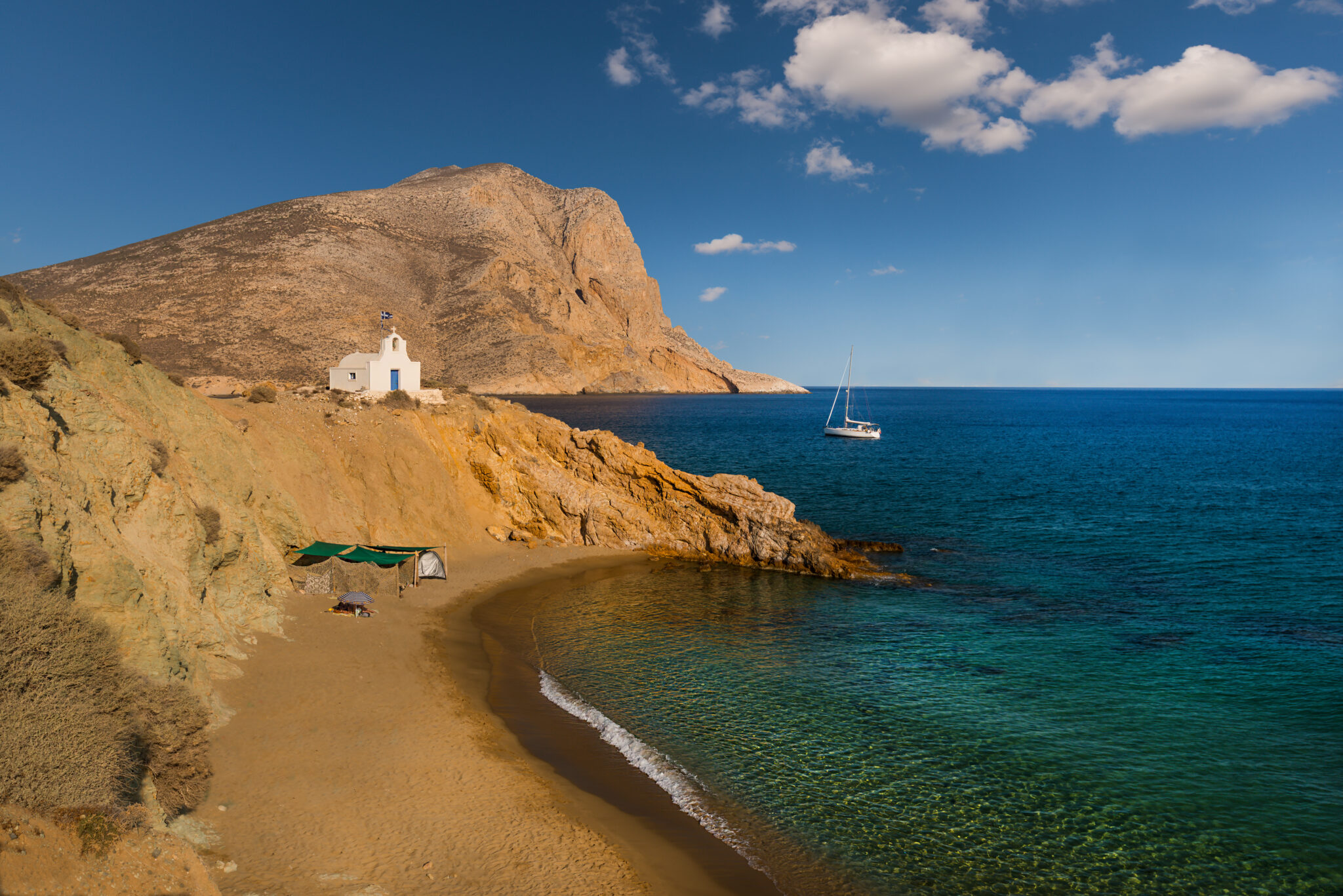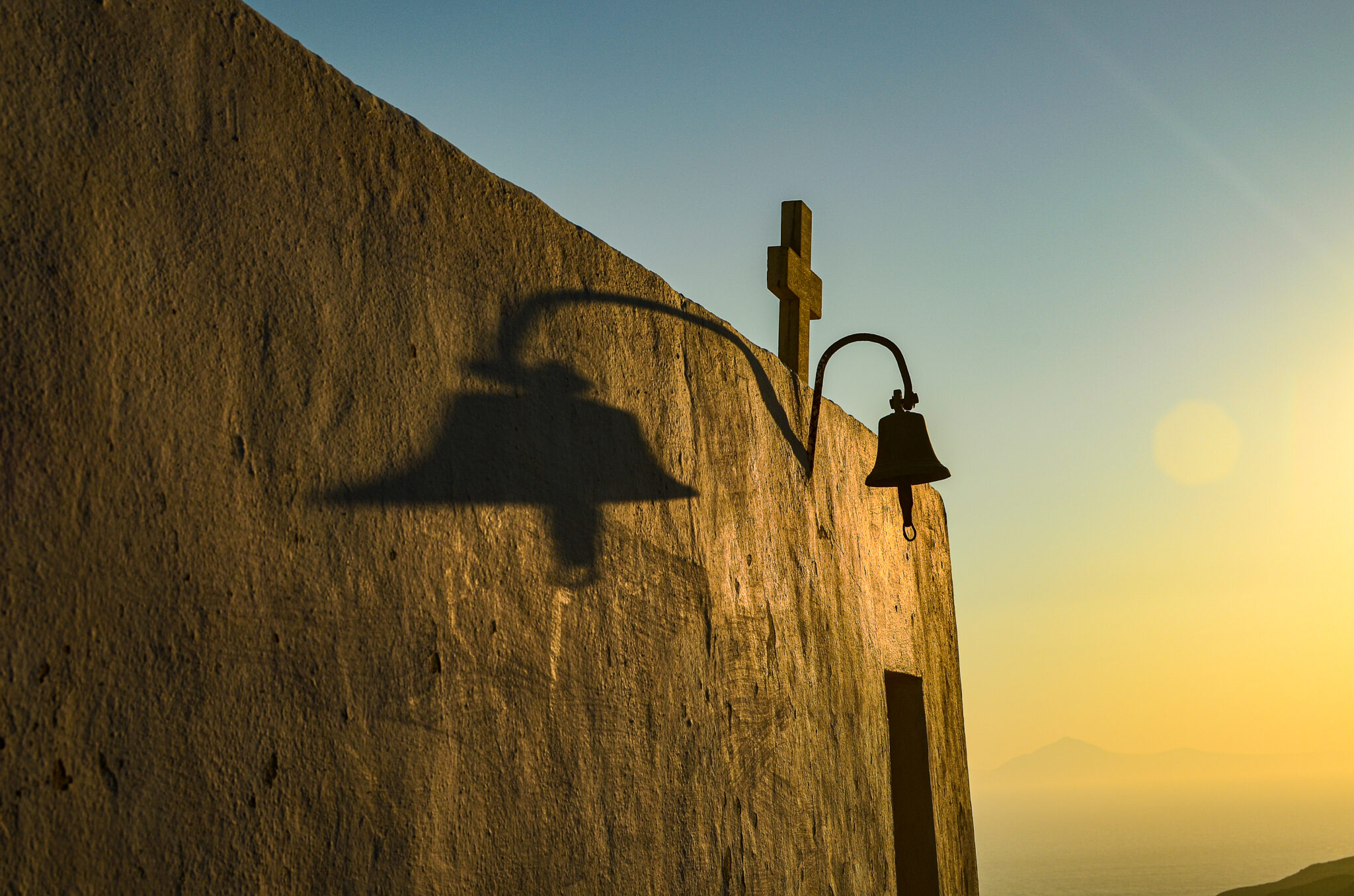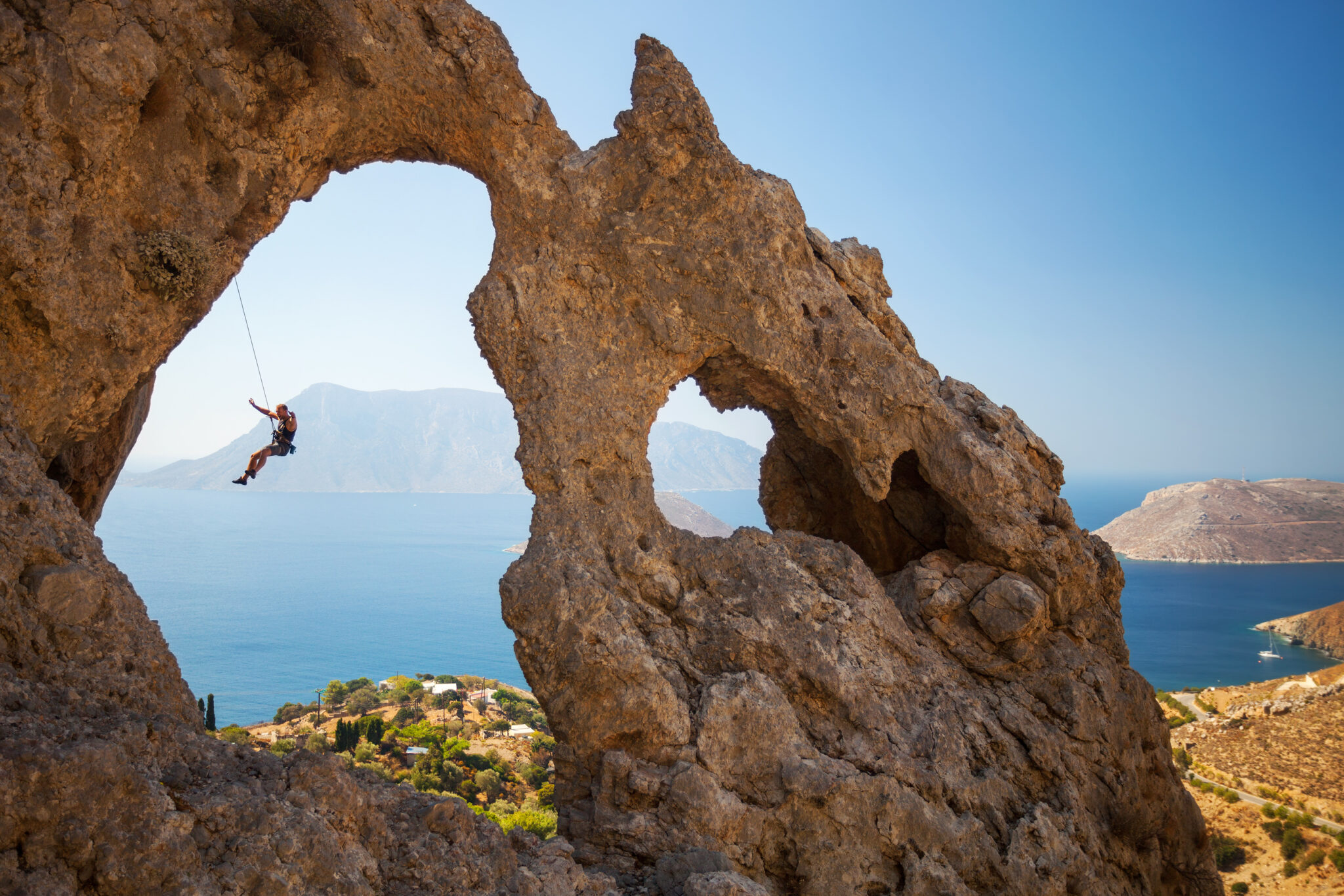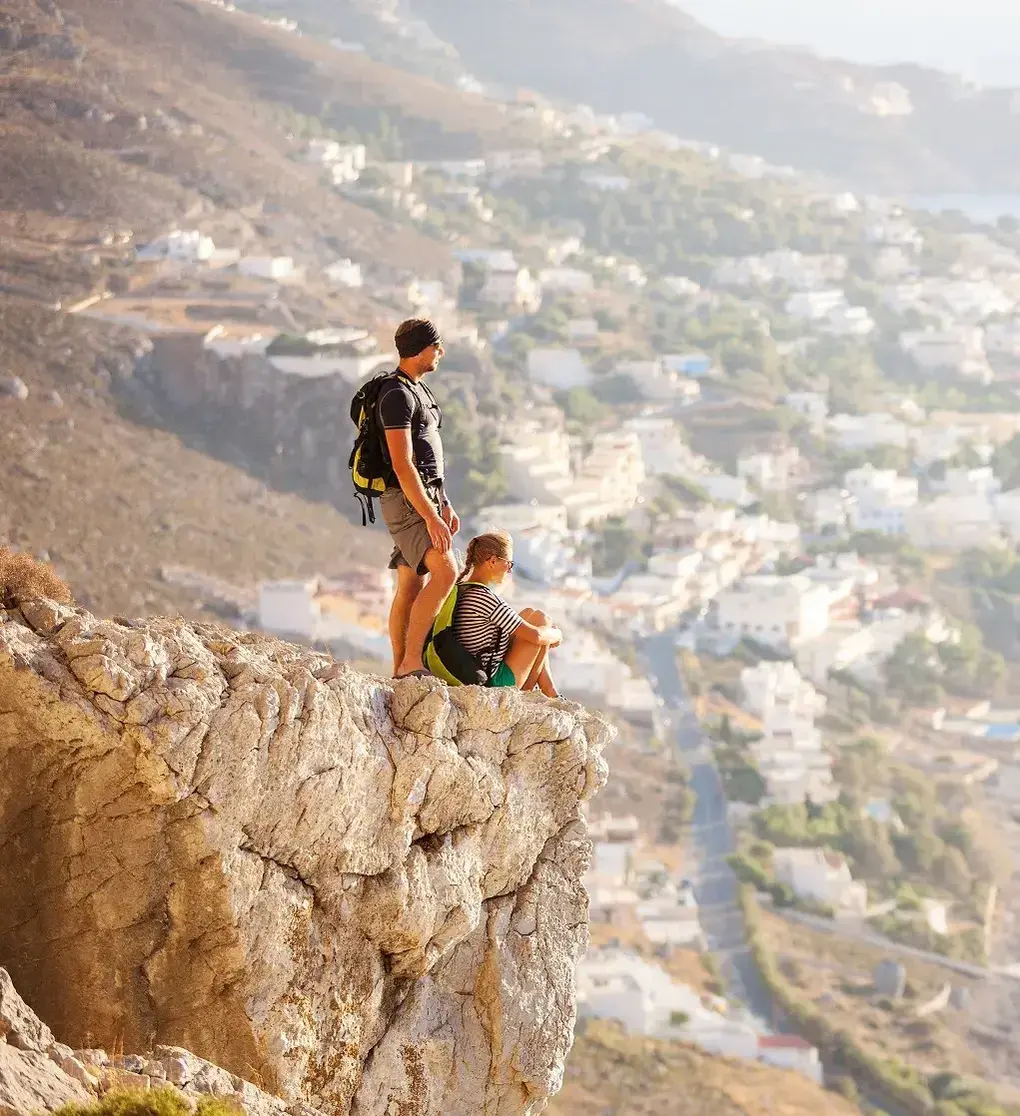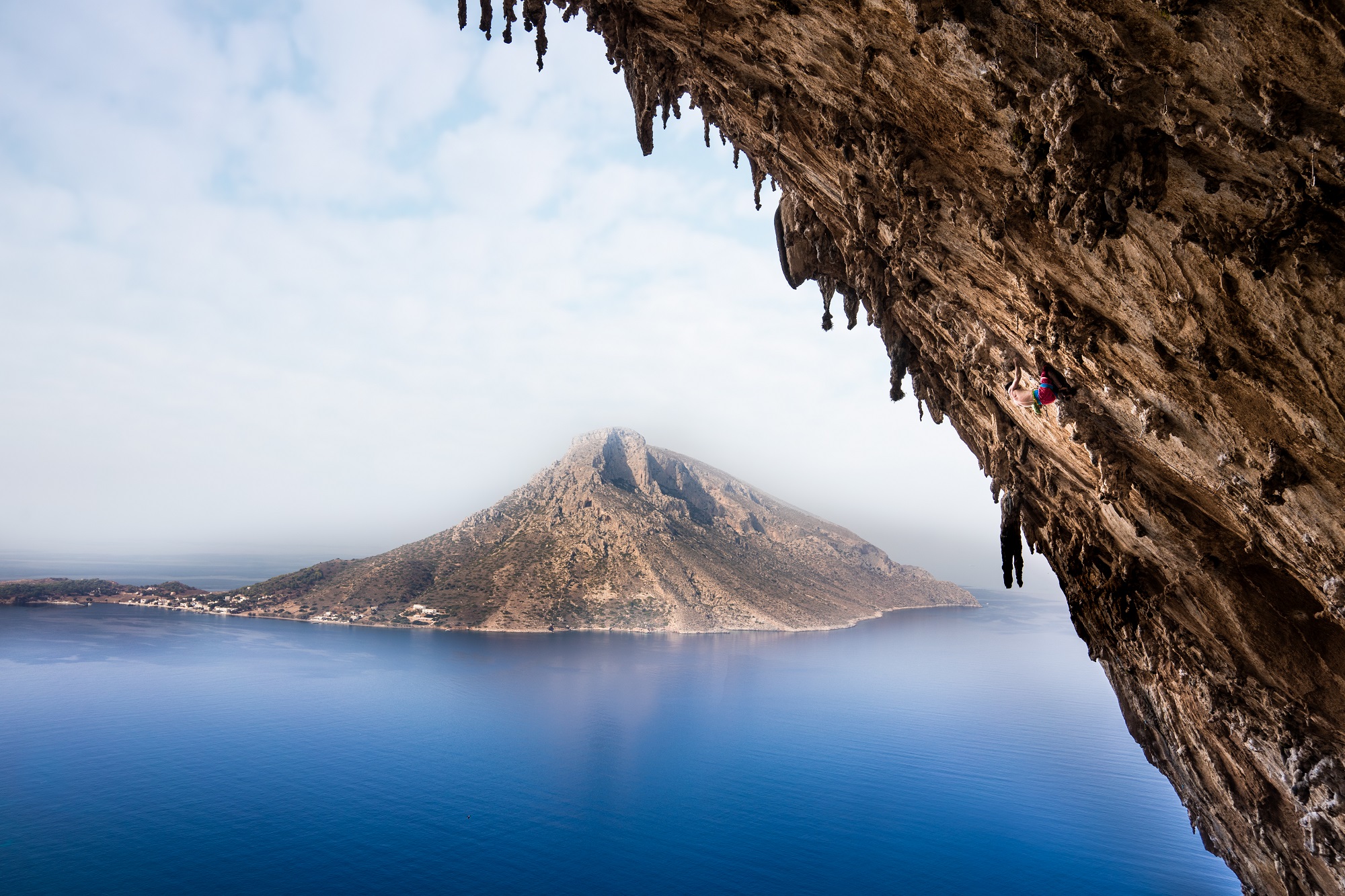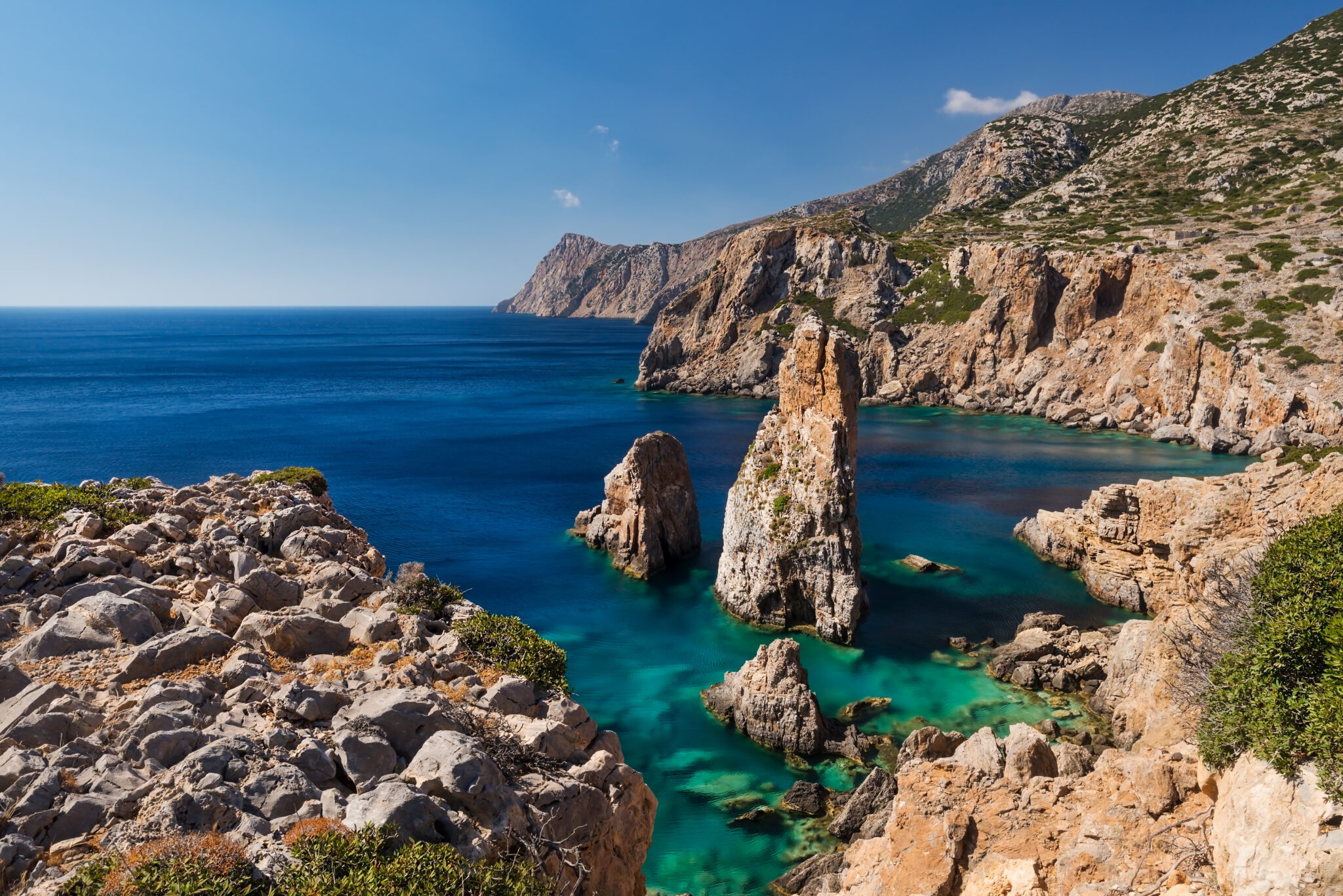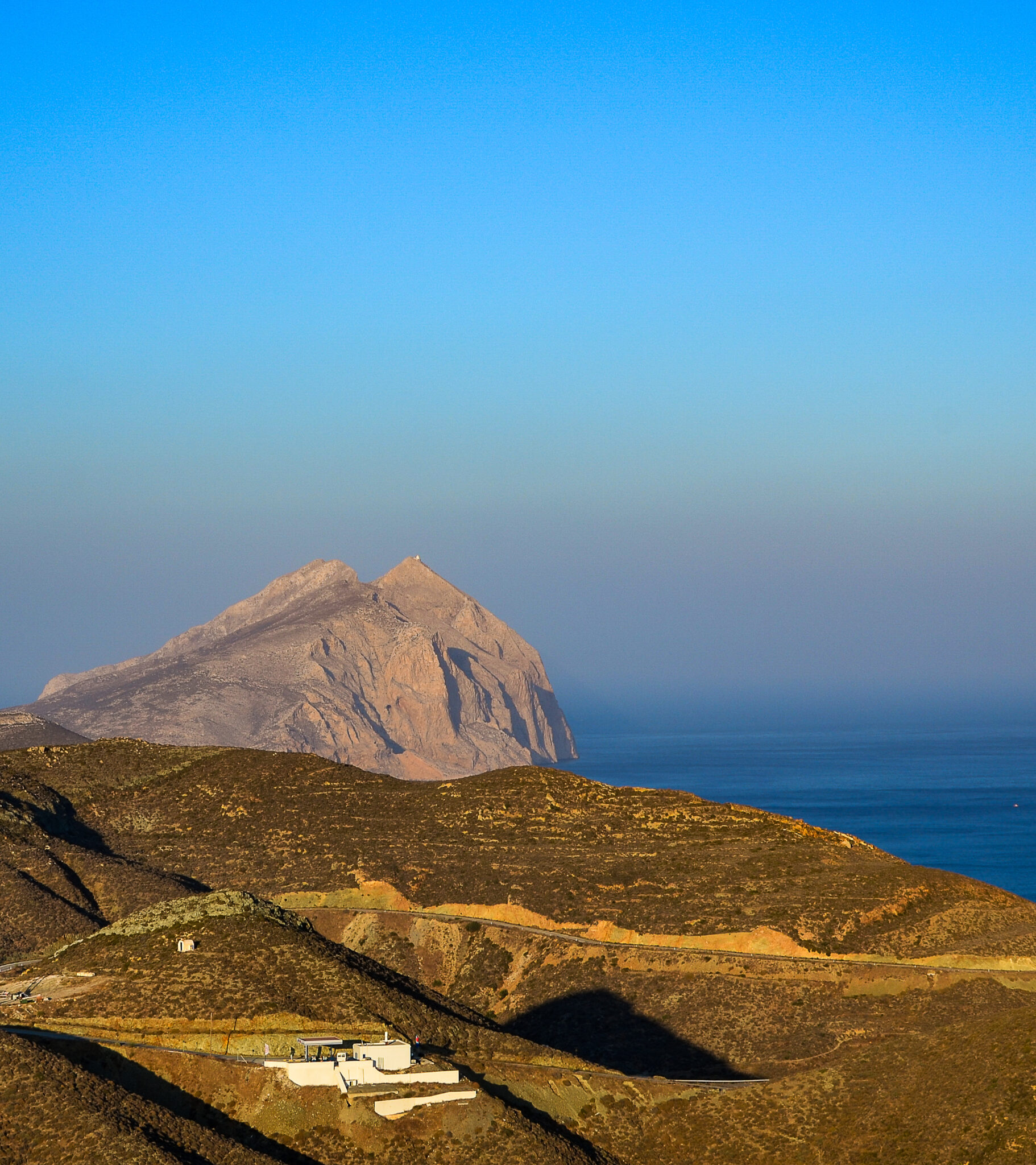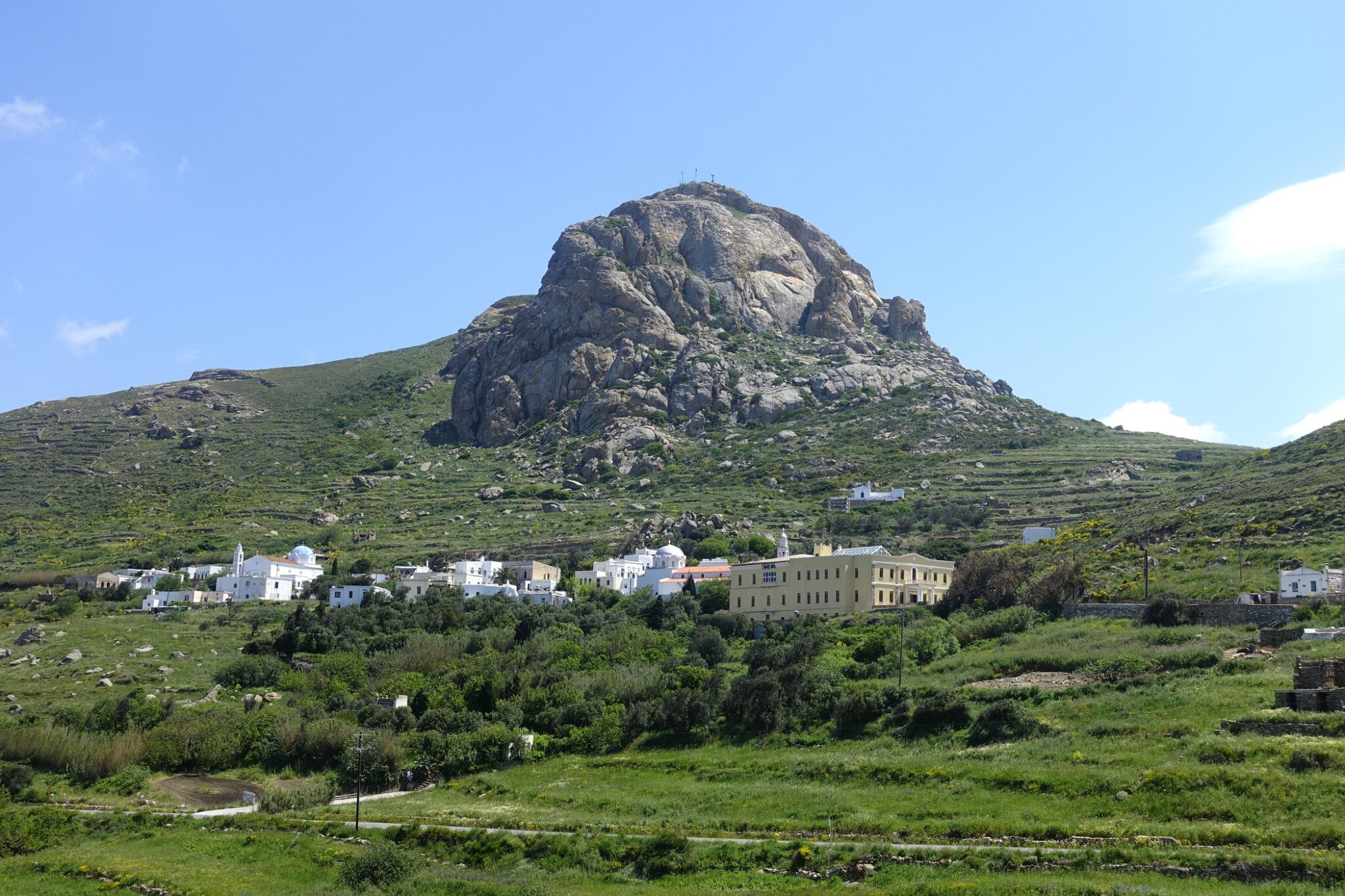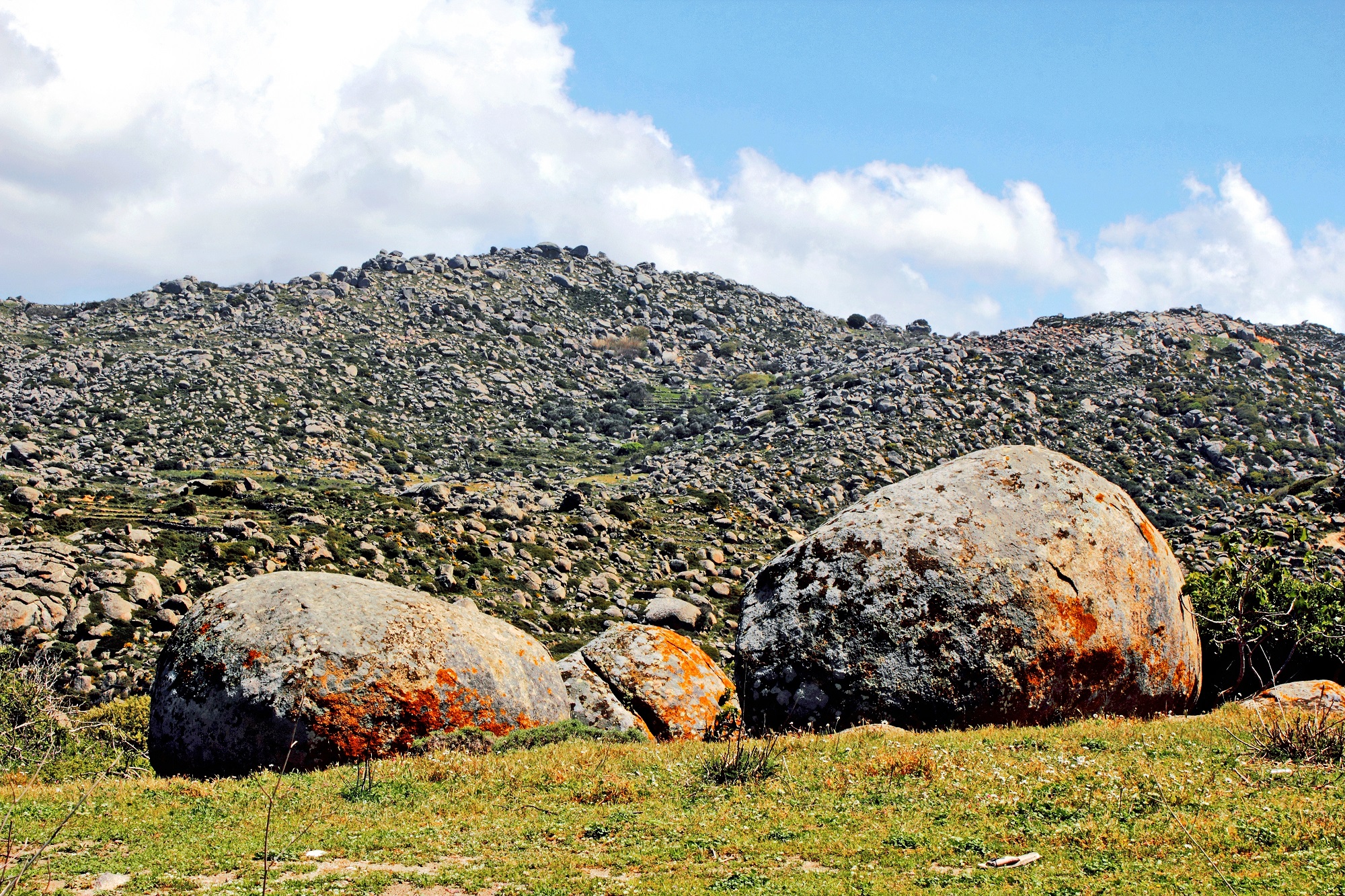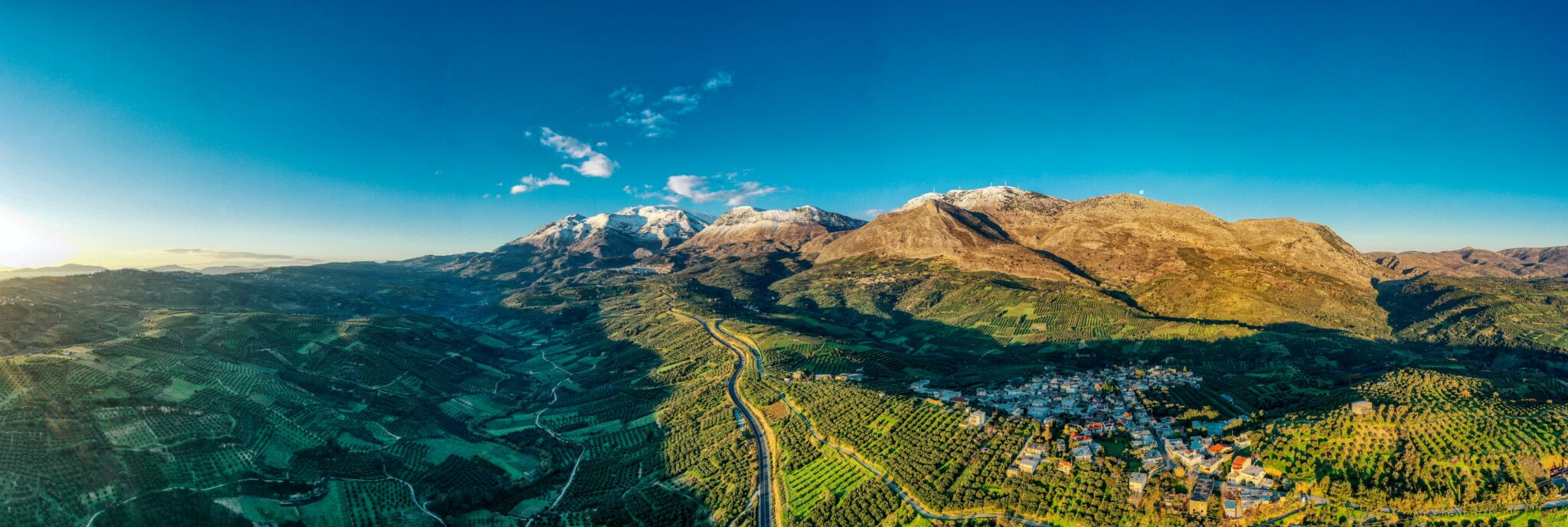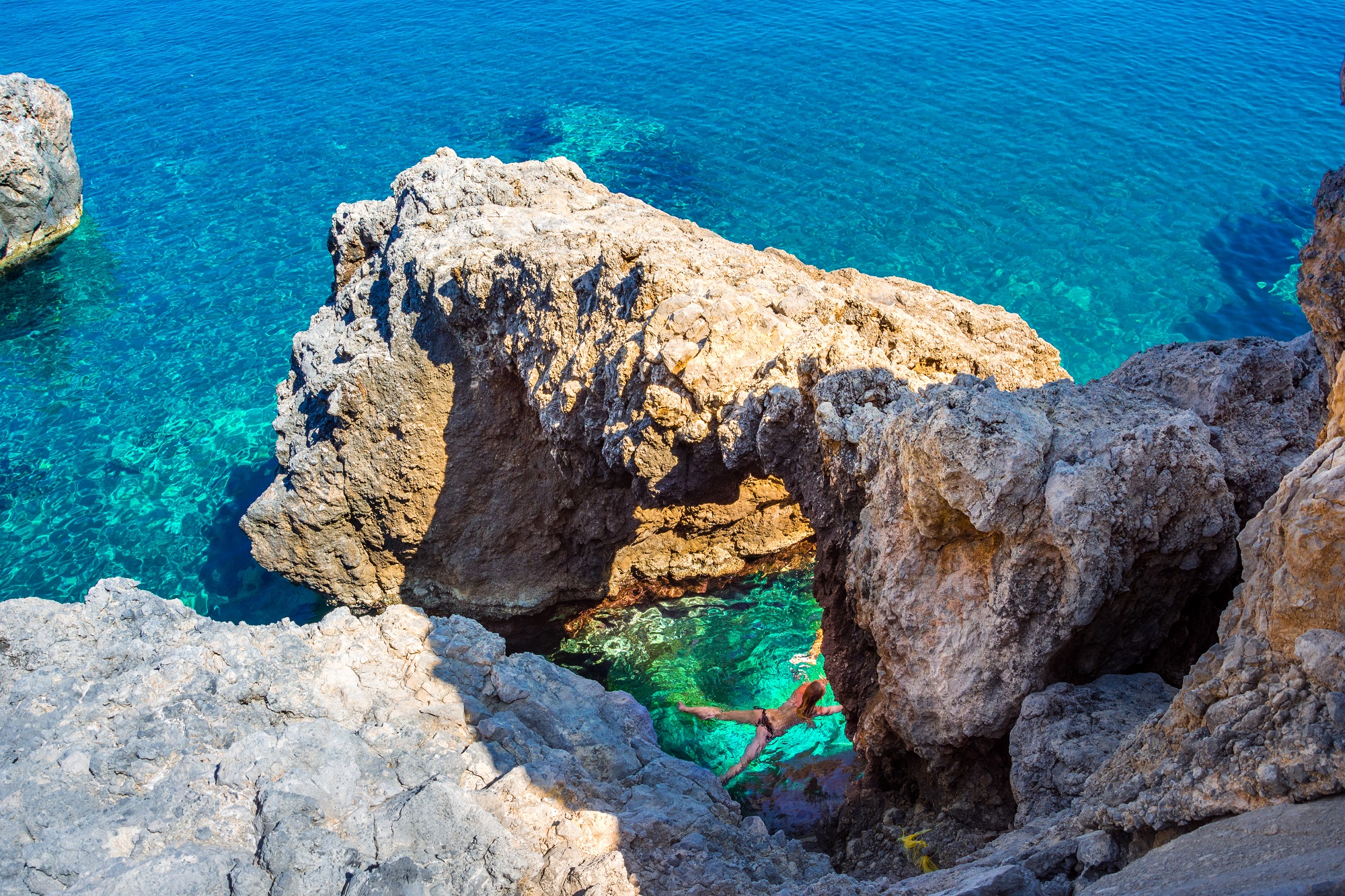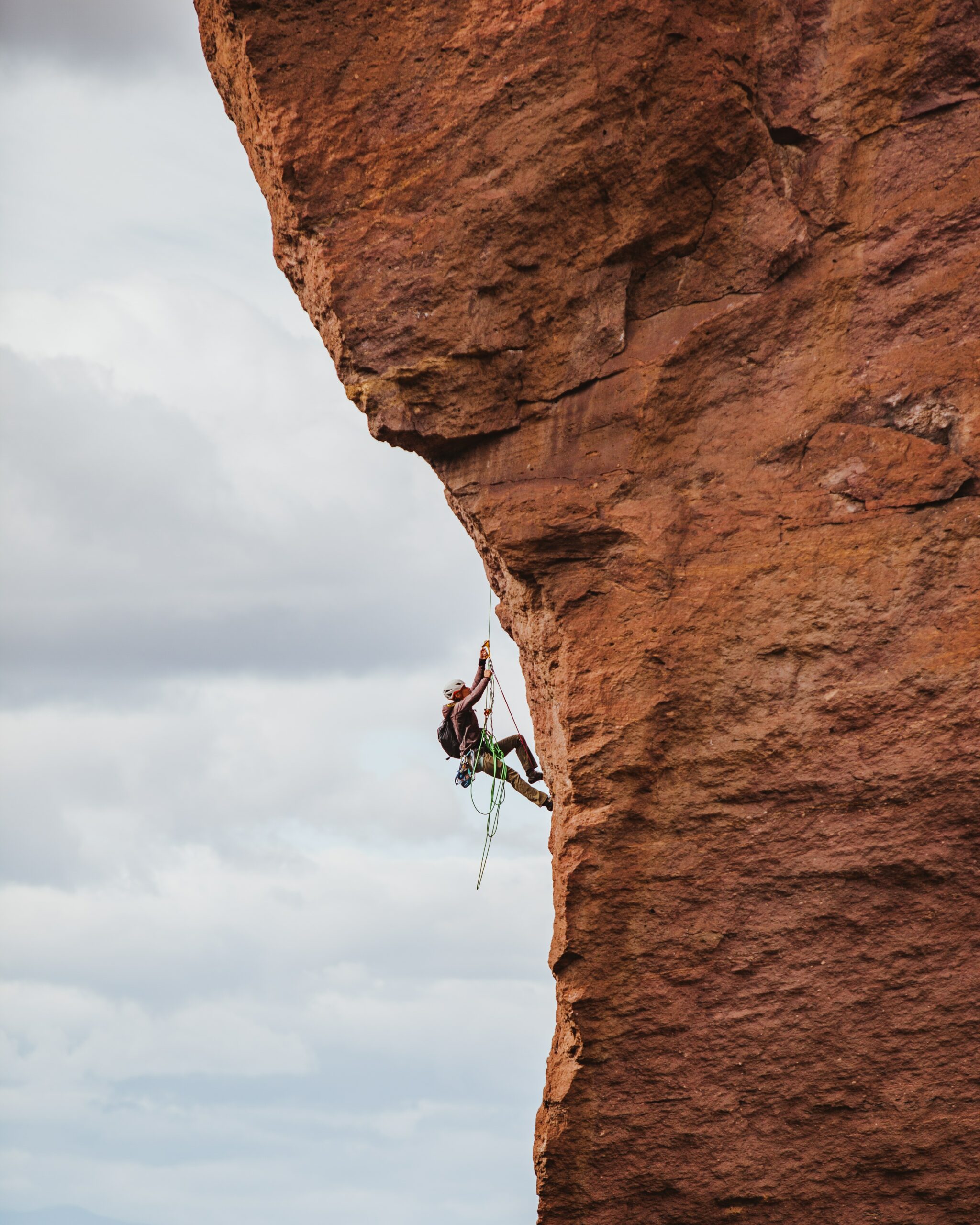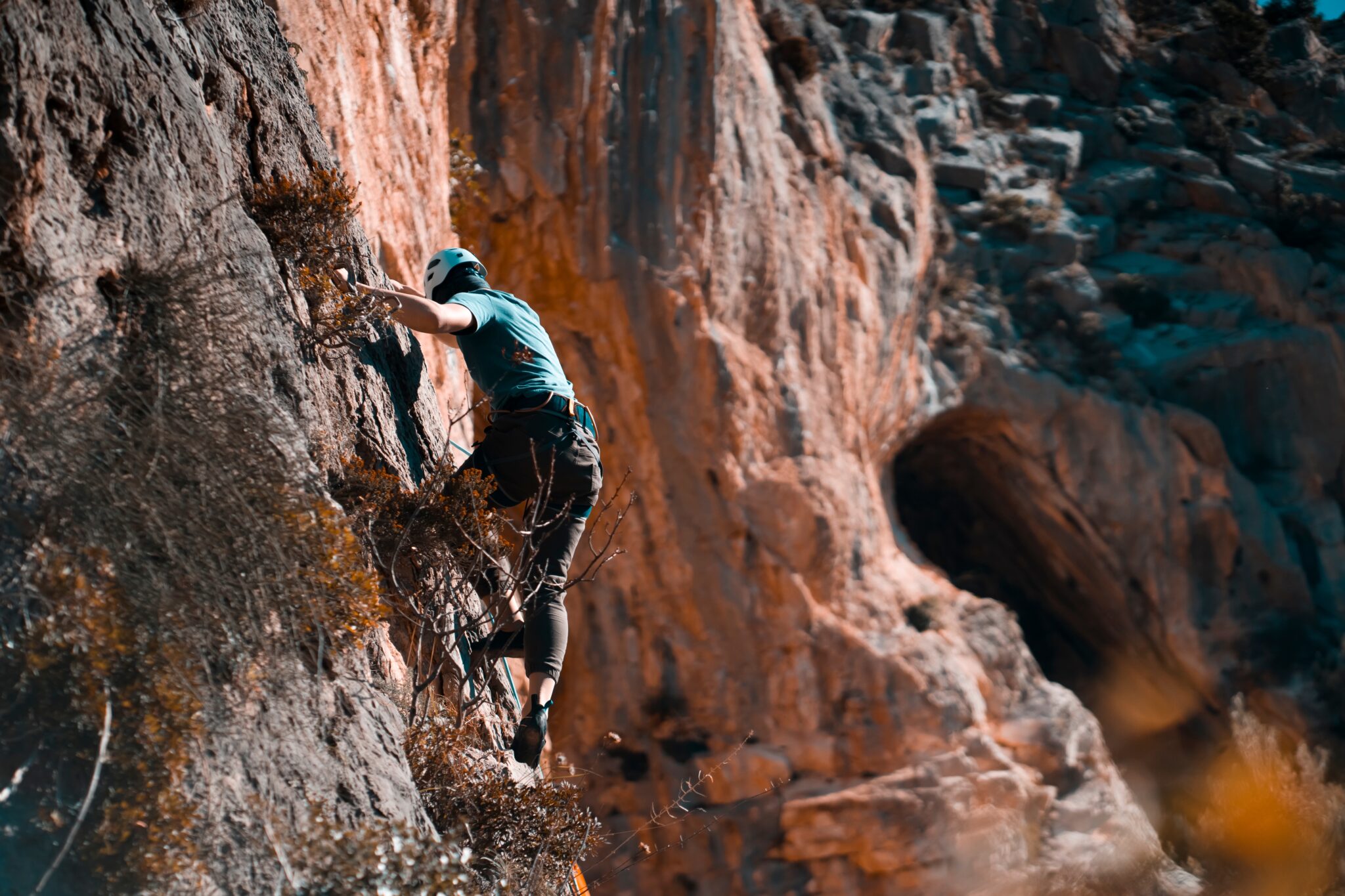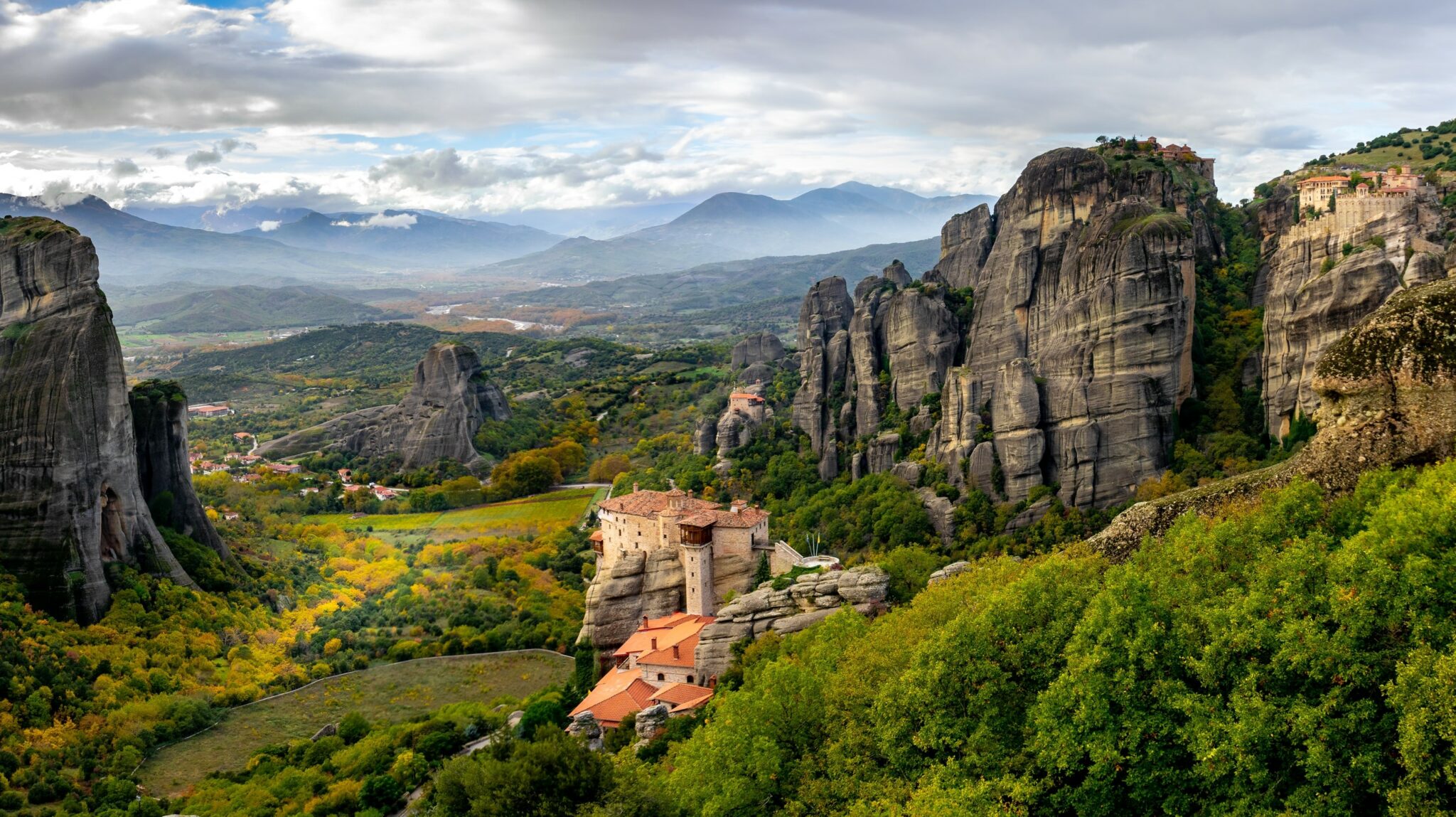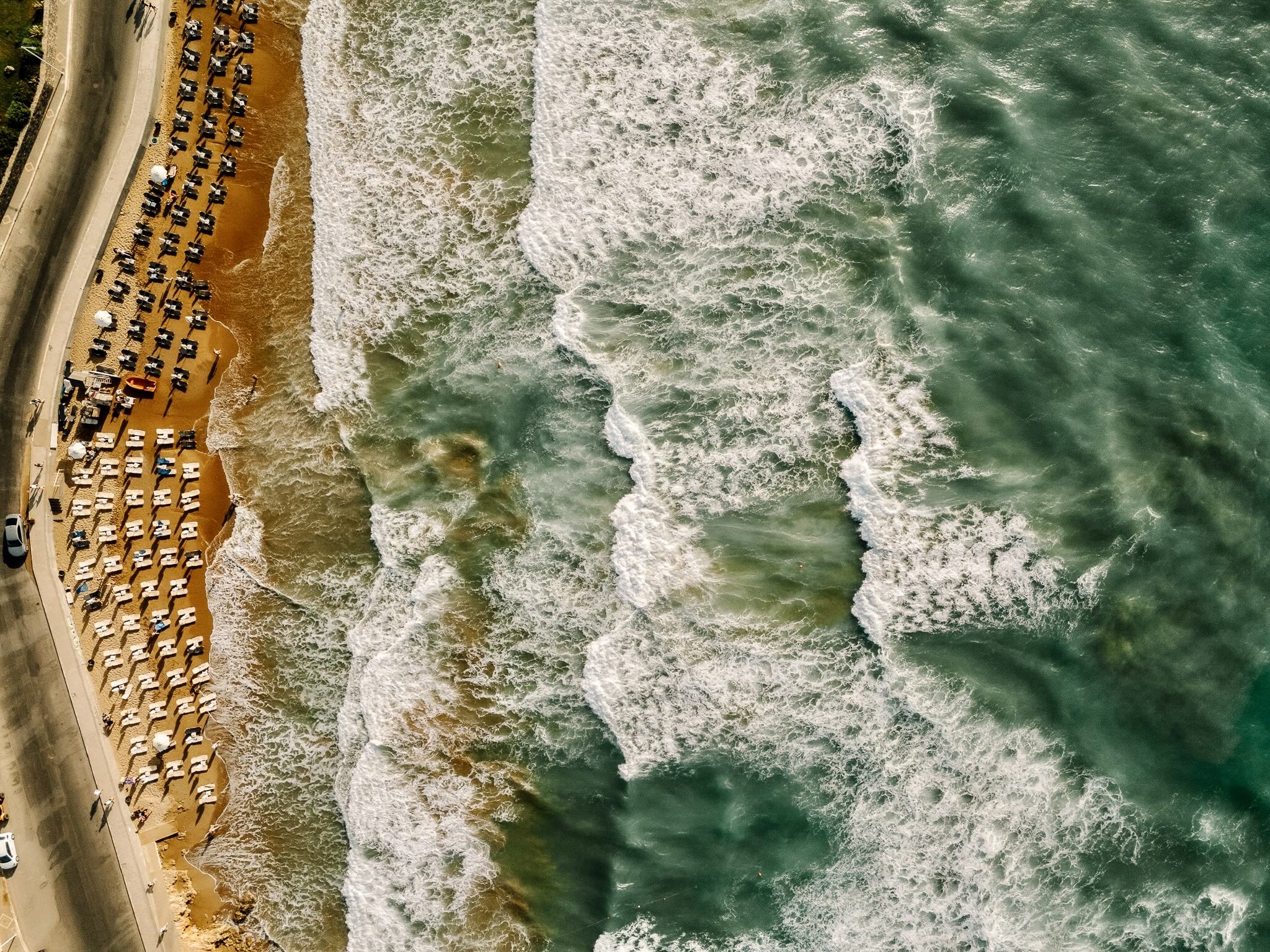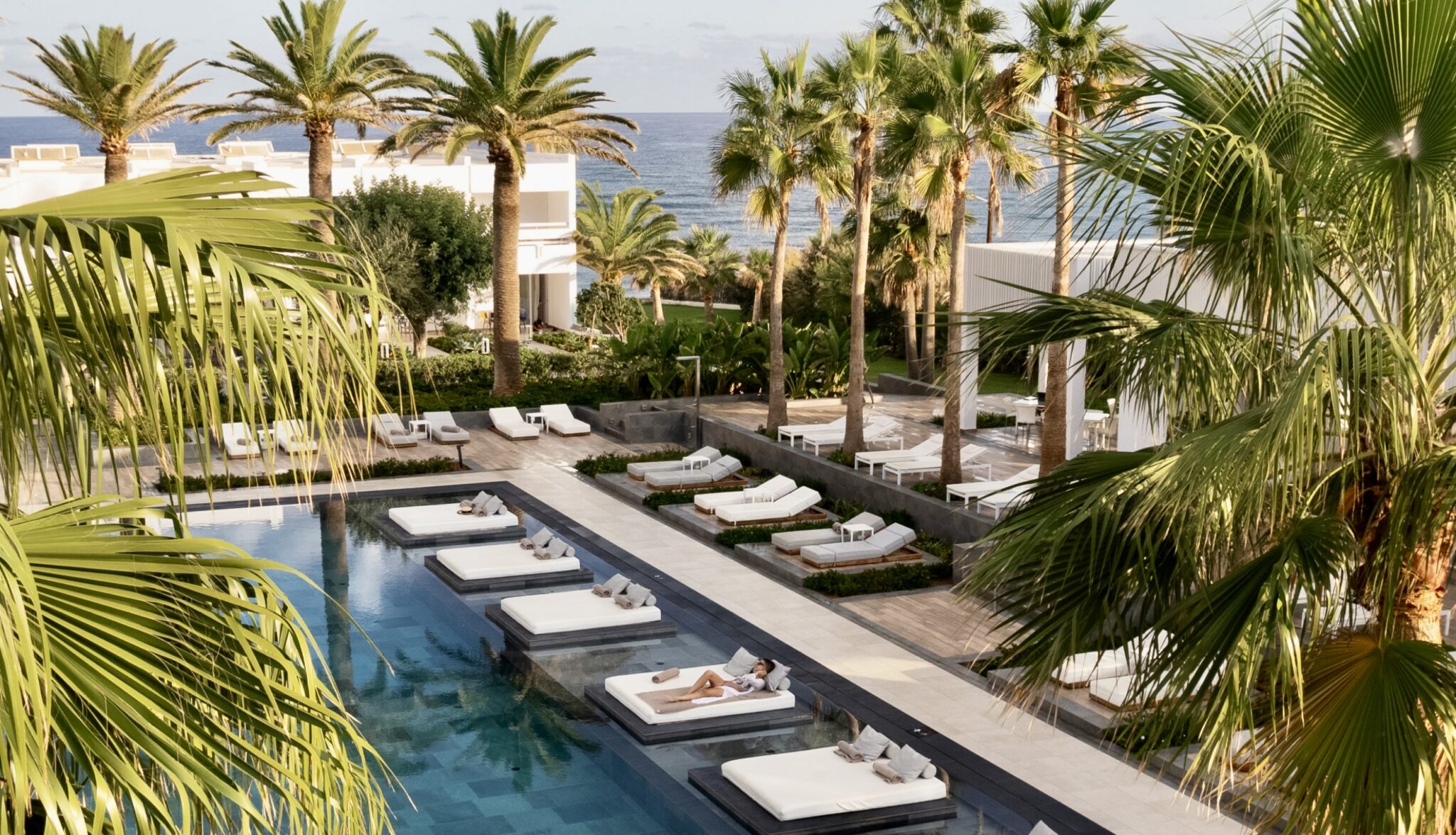With its lush as well as rugged, multifaceted landscapes and awe-inspiring vistas, is an optimal destination for rock climbing enthusiasts seeking adventure both on the mainland and across the islands. Far from the usual tourist trails, rock climbers can discover places where archaic rocks challenge and exhilarate, and serene views from the top offer the best reward. From dramatic cliffs that plunge into the sea to craggy mountains that scrape the skies, Greece provides an unparalleled playground for those who rise to the challenge.
Instead of simply spending time on the beach and driving around, by going rock climbing you gain a singular and adrenaline-raising perspective on every place you visit. Whether you’re a seasoned veteran or a curious novice, the country’s varied climbing spots we list in this article will offer a gratifying workout and incredible vistas of villages, gorges, the sea, and monuments.
01
Kalymnos
Kalymnos is probably the most famous climbing island in Greece. In 1996, the Italian Andrea di Barri visited Kalymnos and realized the island’s climbing potential on the limestone rock formations. The following year he returned to the island with his friends, and they forged the first climbing routes. Today, Kalymnos is well known both within and outside Greece for its climbing fields, which include about 3,000 secure, marked climbing routes for every level, attracting thousands of climbing aficionados from around the world.
Steep protrusions, climbing among stalactites, technical routes, volcanic formations, boulders, rock climbing by the sea, sport climbing, whichever route you’re seeking can be found here. Almost the whole northwest part of the island is a climbing field, Masouri, Kasteli, Arginontas, Skalia and many more spots are full of challenges. There are also many interesting climbing fields on the neighboring island of Telendos. The view from the tops of the routes is truly breath-taking. Also note that there is special rescue team on the island.
02
Karpathos
Karpathos is an up-and-coming island in terms of climbing. It already has more than 300 routes in over 30 climbing fields. One of the most important climbing fields is the one at Kira Panagia, which has many routes, and some of them on rocks that are touching the water which means that once you complete the route, you can enjoy a reviving swim and cool off.
Apela also has routes on rocks touching the sea and has many great routes, and perhaps the best rocks for climbing on the island, while access there is quite easy. Adia, with its lovely Flaskia gorge has some great routes with quality rocks and a large crag surface. At the Kastelos cape, you’ll find routes with an amazing view of the Aegean, while the field of Ahata beach is also nice, as are the rocks above the village Finiki.
03
Anafi
On the small, rocky island of Anafi there’s only one climbing challenge but it’s quite spectacular. It’s Kalamos, the second largest monolith in the Mediterranean sea after Gibraltar, and it’s for very skilled climbers.
The first route, named “Argonaftiki Extratia” (Argonautic Expedition), was opened in 1999 and is at 250 m altitude, but there are more routes, all of them in Kalamos. If you manage to climb it, you’ll enjoy perhaps the greatest view of the Aegean. Access is by sea only, and you need to be extra careful when it’s windy, as the spot is very exposed to the weather.
04
Tinos
The island of Tinos has been known for its religious tourism, but in the past years it has also been promoting its other great aspects: its gorgeous villages, its gastronomy, its lovely hiking trails through Tinos Trails, as well as its climbing spots. The island offers all types of climbing, including double rope climbing and bouldering on granite. Tinos’ main climbing field is located at Exomvourgo, the large rock on which the homonymous castle is located. You can find about 90 30m routes, however there are multiple rope routes that reach 100m, while there’s also the “Disneyland” field that is ideal for children between the ages of 6 and 12. For the bouldering fanatics, there are 800 routes on the island, in Kakia Skala, Volax, the beach of Livada and elsewhere.
05
Crete
The list of Greece’s best climbing spots would not be complete without Crete. The island is huge and has many options for all levels, all around the island. In the Heraklion region, the most well-known field is Agiofarago with the large sharp rock.
Here most routes are within the gorge, while there are some on the beach as well. Note that this field has some of the hardest routes on the island, rated 8b+, while not all routes are secure. The field in the Tris Eklisies village is ideal for the more experienced climbers. In the Rethymno region, in Plakias, there are hard routes on great quality rocks reaching 80 meters height, with amazing views, while it’s ideal for climbing throughout the day, even in the summer, since it faces north-west.
The most well-known rock-climbing spot in Hania is the gorge of Therisso, on the way towards the village, which has routes ranging between five and eight difficulty rates. In Dikti, in the Lasithi region, there’s an abundance of routes for all levels of experience. The field is located in the Limnakaro plateau, on the Spathi crag. These are just a few of the climbing spots in Crete. There are many more all over the island, but not all of them are secure, and you should have full climbing gear.
06
Chios
In Eastern Aegean, Chios is a worthy climbing destination. The first routes were opened in 1992, and since then, many climbers visit to practice their favourite sport. One of the most interesting and best organised fields is Daskalopetra, in the Rahti area, near Vrontados. It’s a vertical limestone rock with six routes. Anavatos also has some amazing climbing routes, some of which reach the walls of the medieval castle, however access to these routes is a bit tricky. The island has other climbing fields as well, like in Karia, in Vrahos Kournas, in Dafnonas and in Klidou.
09
Peloponnese
Leonidio is the heart of rock climbing in the Peloponnese, with about 1,000 routes. It’s one of the few places in Europe suitable for climbing during the winter months, from November to March. The town is situated at the base of Mt Parnon, with a 250-meter-high cliff of red limestone dominating the landscape, its concave shape offering natural protection from winter conditions. Other notable climbing destinations include the village of Kyparissi and Nafplio. Beyond its scenic views, historical significance, and beautiful seas, Nafplio is a climbing must-visit, featuring seven sectors named “Pagkaki,” “Octopussy,” “Orestis,” “Apsi,” “Panagitsa,” “Neraki,” and “Mythology,” catering to both beginners and advanced climbers.
10
Meteora
Famous not only for its rich religious and cultural heritage but also for its endless climbing routes, Meteora thrills climbers with its stunning natural landscape. Ideal for experienced climbers seeking adventures in nature, Meteora offers multi-pitch climbing that connects you with its majestic rock formations. One of the most impressive is the Dupiani rock, rising 100 meters with sport climbing routes ranging from 4+ to 6a, with options for different skill levels. Local guides, experienced and certified according to international climbing and mountaineering standards, will ensure your safety and introduce you to the secrets of the routes. Climbing in Meteora offers a memorable experience for seasoned climbers, allowing for up to three participants per group. Trekking Hellas also provides a range of activities in the area, including rafting, rappelling, and hiking, aiming to foster a love for nature and outdoor activities.



